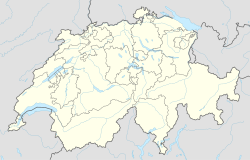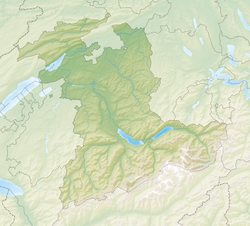
Münchenwiler is a municipality in the Bern-Mittelland administrative district in the canton of Bern in Switzerland.

Aarburg is a historic town and a municipality in the district of Zofingen in the canton of Aargau in Switzerland.

Aarwangen is a village and a municipality in the Oberaargau administrative district in the canton of Bern in Switzerland.
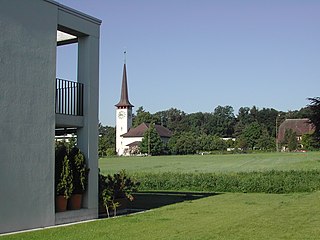
Zollikofen is a municipality in the Bern-Mittelland administrative district in the Swiss canton of Bern. It is a suburb of the city of Bern.

Kandergrund is a municipality in the Frutigen-Niedersimmental administrative district in the canton of Bern in Switzerland.

Köniz is a statistical town and a municipality in the Bern-Mittelland administrative district right on the southern border to Bern in the canton of Bern in Switzerland. The municipality of Köniz as a single settlement would belong to the 15 most populous towns in Switzerland. It is also part of the larger agglomeration of Bern of about 400,000 inhabitants.
Albligen is a former municipality in the Bern-Mittelland administrative district in the canton of Bern in Switzerland. On 1 January 2011, the former municipalities of Wahlern and Albligen merged into the new municipality of Schwarzenburg.

Rüschegg is a municipality in the Bern-Mittelland administrative district in the canton of Bern in Switzerland. It is also a Swiss Reformed Church parish.

Bolligen is a municipality in the Bern-Mittelland administrative district of the canton of Bern, Switzerland.

Mühleberg is a municipality in the Bern-Mittelland administrative district in the canton of Bern in Switzerland.

Oberdiessbach is a municipality in the Bern-Mittelland administrative district in the canton of Bern in Switzerland. On 1 January 2010 the former municipality of Aeschlen and on 1 January 2014, Bleiken bei Oberdiessbach merged into the municipality of Oberdiessbach.

Schwarzenburg is a municipality in the district of Bern-Mittelland in the canton of Bern in Switzerland. It was created on 1 January 2011 through the merger of the municipalities of Wahlern and Albligen.

Riggisberg is a municipality in the Bern-Mittelland administrative district in the canton of Bern in Switzerland.
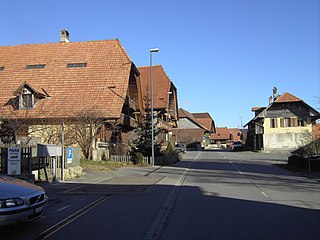
Rüeggisberg is a municipality in the Bern-Mittelland administrative district in the canton of Bern in Switzerland.

Röthenbach im Emmental is a municipality in the administrative district of Emmental in the canton of Bern in Switzerland.
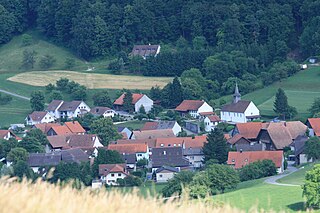
Thalheim is a municipality in the district of Brugg in the canton of Aargau in Switzerland.

Seewis im Prättigau is a Swiss village in the Prättigau and a municipality in the Prättigau/Davos Region in the canton of Graubünden.

Rothenbrunnen is a municipality in the Viamala Region in the Swiss canton of Graubünden.

Sils im Domleschg is a municipality in the Viamala Region in the Swiss canton of Graubünden.

Sagogn is a municipality in the Surselva Region in the canton of Graubünden in Switzerland.


